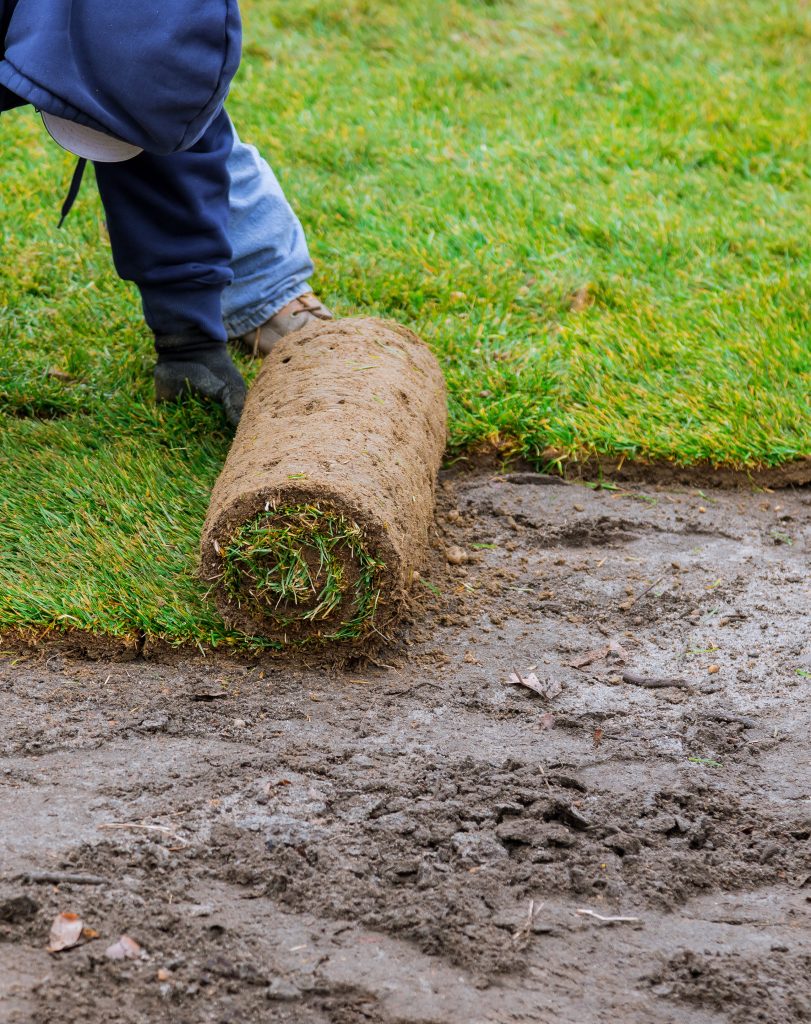**ALWAYS WATER ALL NEWLY PLANTED/TRANSPLANTED PLANTS IMMEDIATELY AFTER PLANTING**
Palm Trees Watering Instructions:

When to water:
Newly planted palm trees like to be watered either in the early morning or late afternoon. It is most beneficial to avoid watering a palm tree during peak temperatures of the day. Whether you choose to water in the morning or at night, always touch the soil at the base of your palm tree before watering. If the top 2 inches of soil are completely dry, then it is safe to water. If the top 2 inches of soil are still wet from the last watering then skip a day of watering and check it again the next day.
Where to water:
When watering your palm tree, be sure to water at the base of the plant rather than overtop of the plant. Watering palm tree fronds directly can cause damage or discoloration. It is important to saturate the soil deeply at the base of the plant to allow the roots to receive as much of that water as possible.
How to water:
You should be watering your newly planted palm tree every day for the first 3 weeks. For the following 3 weeks you should switch to watering every other day. Your palm tree should be well established by the end of the first 6 weeks after planting. A drip irrigation system is the recommended form of watering for newly planted palm trees. This is the most efficient way to allow slow, steady release of water directly to the root zone.
How much to water:
The exact amount of water that your newly planted palm tree needs during each watering all depends on the size of the plant. As a rule of thumb, 10-gallon sized palm trees need 2 gallons of water during each watering session. A 25-gallon sized palm tree will need 5 gallons of water during each watering session. If you are using a drip irrigation system to water your palm tree, you should let your drip hose run for about an hour and a half to two hours during each watering session.
Signs of underwatering:
Signs of an underwatered palm tree can include curled up fronds, and brown discoloration at the tips of the fronds. If a palm tree remains underwatered for too long, it will start to produce new growth that is much smaller in size and much lighter in color.
Signs of overwatering:
Signs of an overwatered palm tree can include wilting or discolored fronds. Typically, an overwatered palm tree fronds will first turn yellow, and then drown. It is also possible for dark gray/brown patches that feel moist to the touch to develop on the fronds. This is a sign of a fungal or bacterial infection caused by overwatering.
Other Trees Watering Instructions:

When to water:
All newly planted trees like to be watered out of direct sunlight. Early in the morning or later in the afternoon are great times to water, so try to organize your watering schedule accordingly. Keep in mind that if the rain is watering your plants for you then you do not need to water them again. Wait until at least 2 days after the rain has completely stopped to resume a regular watering schedule.
Where to water:
It is very important to water your trees at the base to allow the entire root area to become saturated. Allowing a garden hose or drip line to sit at the trunk of the tree and slowly trickle out water is the most effective watering method for watering newly planted trees.
How to water:
For the first week or 2 after planting a new tree, you should be watering it everyday. For the following 3 weeks you can reduce watering to every other day or 3 times a week. After the first 6-8 weeks after planting your tree should be beginning to become established. Once established, reduce watering to only when the top 6 inches of soil has completely dried out from the last watering session.
How much to water:
You should provide 2 gallons of water for every one inch of the trunk diameter. The best way to ensure that your new tree is receiving an adequate amount of water is to let a drip irrigation system trickle out water slowly for about 2 hours during the first few weeks. Once the tree is established you can reduce watering to one hour of drip irrigation 3 times a week.
Signs of underwatering:
Signs that your tree is being underwatered include browning leaves, and crispy/lightweight leaves. The most reliable way to determine if your tree is being overwatered is by touching the soil at the base of the plant. Try to use the soil to create a ball in your hands. If the soil is struggling to keep shape, or if the soil completely crumbles in your hands, then your plant is being underwatered.
Signs of overwatering:
You can tell that a tree is being overwatered if it has wilting or yellowing leaves. The tree could also begin to become soft or limp. Another common sign of overwatering is the accumulation of moss or mushrooms at the base of the plant. The most reliable way to determine if your tree is being overwatered is by touching the soil at the base of the plant. Try to use the soil to create a ball in your hands. If the ball of soil releases water when you squeeze it, then your tree is being overwatered.
Shrubs Watering Instructions:

When to water:
Newly planted shrubs like to be watered thoroughly immediately after being planted. Try to plan your watering schedule for either the early morning or later afternoon, during the coolest temperatures of the day. If the top 6 inches of soil are still wet from the last watering, then skip watering for that day and check again tomorrow. If the top 6 inches of soil are dry then it is safe to water as planned.
Where to water:
Water your newly planted shrubs at the plant to saturate the entire root area. Keep in mind that the root system may extend up to double the length of the spread of the shrub’s limbs.
How to water:
For the first two weeks after planting a new shrub, you should be checking the moisture of the soil as often as possible. Checking the moisture daily is recommended if possible. When the top 6 inches of soil has completely dried out since the last watering, that is when you know when it is time to water again. When you water a newly planted shrub you should be soaking the soil 12 inches deep. Overhead sprinkler irrigation may not be an adequate method of watering newly planted shrubs. You need to be sure that your watering method is allowing water to soak the root system.
How much to water:
The most efficient way to properly water a newly planted shrub is to let a drip irrigation system slowly release water at the base of the trunk for about 30 minutes a day. This should be done everyday for the first month to two months after planting. During the third month after planting, watering can be reduced to only when the top 6 inches of soil have dried out from the last watering session.
Signs of underwatering:
Telling signs of an underwatered shrub include yellowing leaves that may begin to turn brown, drooping or wilting leaves, slow growth, and soil that is dry to the touch.
Signs of overwatering:
Signs of an overwatered shrub can include yellowing and mushy leaves, mushy or rotten roots, or extremely saturated soil. If you can squeeze water out of the soil at the base of your plant then it is most definitely being overwatered
Perennial and Annual Flowers:

When to water:
It is best to water your garden flowers in the early morning. The most recommended time period to do this is between 5am and 8am. You will know that your flowers need to be watered again when the top 4 inches of soil have dried out since the last watering.
Where to water:
Avoid watering the foliage of perennial and annual plants. Wet foliage can cause damage and discoloration of the leaves. Instead water at the base of the plant to insure that the roots are receiving as much water as possible.
How to water:
For the first week after planting flowers, you should be watering them once a day. You want to keep the soil moist, but not soggy. After the first week, you can reduce watering to about 3 times a week. Once you reach the third week your flowers should be pretty well established and will only need to be watered when the top 2-3 inches of soil have completely dried from the last watering.
How much to water:
For the first couple weeks, your annual and perennial flowers will need about 2 gallons of water a week. Once established you will only need to provide your perennials and annuals one inch of water a week. This is the equivalent of about 20-30 minutes of irrigation with rotating sprinkler heads, and 10-15 minutes for stationary sprinkler heads. Keep in mind that if the rain is providing your established flowers with at least an inch of water a week. You do not need to water them again by hand or with irrigation.
Signs of underwatering:
Signs of an underwatered perennial or annual flower can include droopy, wilted, or folded down leaves. It is also common for an underwatered perennial or annual to experience yellow and/or brown discoloration. The most telling sign of all under watered plants is soil that is dry and/or crumbly to the touch.
Signs of overwatering:
Signs of an overwatered perennial or annual flower can include mushy stems, curled leaves with brown edges, falling leaves, moldy soil, and fungus gnats. It is also common for an overwatered perennial or annual to experience stunted growth. The most telling sign of all overwatered plants is soil that releases water when squeezed.
Watering New Sod:

When to water:
The best time to run your irrigation system to water new sod is once in the early morning, and once in the early evening.
Where to water:
It is important to ensure that your irrigation system is reaching every single area in your yard. It is very common for most sprinkler systems to miss corners and edges in a lawn. This puts those areas at risk of drying out.
How to water:
For the first two months after laying new sod, you must turn on your sprinklers for about 20 minutes every day, twice a day. You want to keep your fresh sod moist but not soaked. At the start of the third month after laying new sod you can reduce watering to 1 – 4 times a week as needed. Remember to skip irrigation watering during periods of consistent rain.
How much to water:
After the first 3 months, your lawn will become established. This will require about 1 – 1.5 inches of water a week. Typically, 30 minutes of running your sprinklers will give your lawn about half an inch of water.
Signs of underwatering:
If the blades of grass become brown and crispy then your sod is being underwatered.
Signs of overwatering:
If your sod creates puddles of water or makes squishing sounds when you step on it, your sod is being overwatered.






